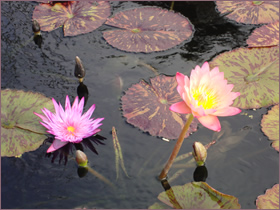 Yoga is about being present for our experience, whatever it might be – a yoga pose, a conversation with a friend, an emotion. This is not easy. Our minds tend to wander. We often judge our own behaviors and vulnerabilities and seek to escape from our discomfort.
Yoga is about being present for our experience, whatever it might be – a yoga pose, a conversation with a friend, an emotion. This is not easy. Our minds tend to wander. We often judge our own behaviors and vulnerabilities and seek to escape from our discomfort.
When we are sitting with someone we love who is dying, our emotional discomfort is at its height, and our minds may increase that suffering. “How long will this go on?” “What will happen to the family?” “Why is God letting this happen?”
And, the mind may journey to the past. “Why didn’t I spend more time with him or her?” “How could I have spoken so harshly?” “I would do so many things differently if I had a second chance.”
These projections and ruminations increase our suffering and keep us from experiencing the painful emotions that are a direct part of the loss. Our inability to stay present steals the time we can be with our loved one as we are more in our heads than in the reality of the present.
Being present with the reality of our grief is key to accepting loss. To do this we need to experience a tender, gentle attitude toward ourselves, without criticism.
This allows us to move toward acceptance and healing.
In yoga we are asked to observe the “effects” of our practice. Are there any areas of tension or openness? Is my breath long or short? Is my mind active with thoughts or quiet?
We are training to free ourselves from the judging mind. Without the judging mind, we don’t have to feel bad about what we notice. We don’t have to compare ourselves to others. This freedom can allow us to see and accept our vulnerabilities. It allows us to have compassion for ourselves.
When we begin to be present with our pain, treating ourselves with compassion for our suffering as we would treat a child in pain, we can begin to accept our loss.
Bringing compassion to the brokenness we feel in our grief can help us connect with the love we have for the one we have lost. We can come to recognize the love that bound us that still lives on within us. When we reach this place, we have moved to a deeper healing and sense of peace, and a profound honoring of the one no longer with us.
~
A five week “Yoga for Life, support for those who are grieving” begins Thursday, September 5th. For more information, you can read a description of the class. If you or someone you know is grieving and would like to explore the healing potential of yoga, please contact me by noon, Tuesday, September 2nd at eterryyoga@gmail.com or call 717-645-0067.
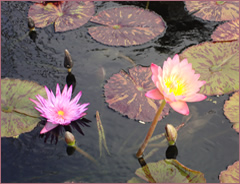 The experience of loss is always about change – struggling with and finally accepting change on many levels. Yoga, as a discipline and a philosophy, is also about acceptance of what is – of who we are, of the situation we are in, and of the circumstances that brought us to this point. Through the physical and mental practice that is yoga we can learn to apply principles of acceptance to all areas of life.
The experience of loss is always about change – struggling with and finally accepting change on many levels. Yoga, as a discipline and a philosophy, is also about acceptance of what is – of who we are, of the situation we are in, and of the circumstances that brought us to this point. Through the physical and mental practice that is yoga we can learn to apply principles of acceptance to all areas of life.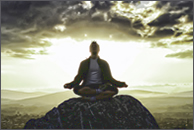 Brahmacharya is the 4th of the five yamas or attitudes and behaviors the Yoga Sutra recommends for our dealings with others.
Brahmacharya is the 4th of the five yamas or attitudes and behaviors the Yoga Sutra recommends for our dealings with others. 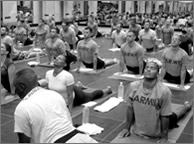 In my Wednesday night
In my Wednesday night 
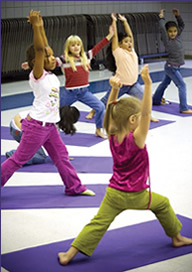 On July 2 a San Diego County Superior Court Judge, John Meyer, ruled that the teaching of yoga was not religious indoctrination as taught in the yoga programs in Encinitas, California schools. As a result, the Encinitas schools can continue to teach yoga to its students.
On July 2 a San Diego County Superior Court Judge, John Meyer, ruled that the teaching of yoga was not religious indoctrination as taught in the yoga programs in Encinitas, California schools. As a result, the Encinitas schools can continue to teach yoga to its students.